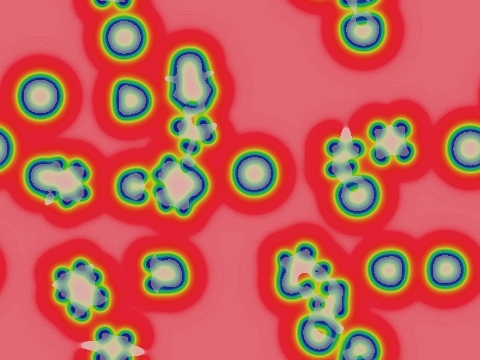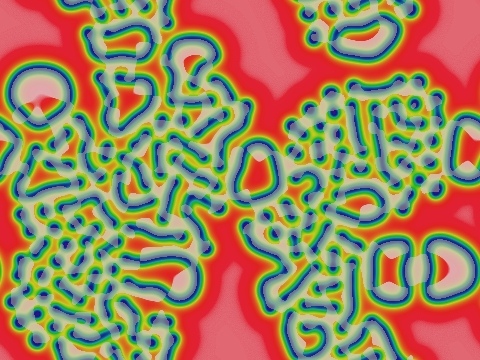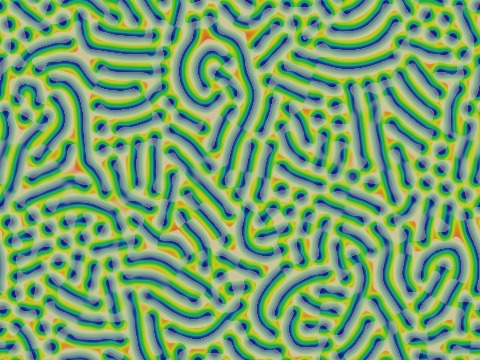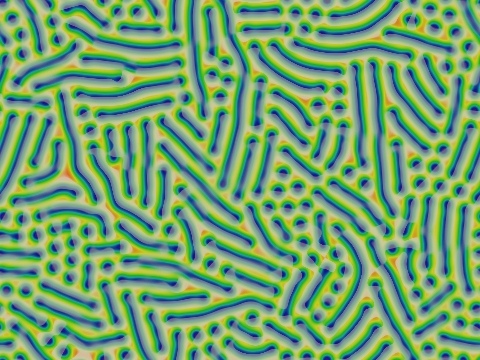Gray-Scott Model at F 0.0380, k 0.0630
These images and movie demonstrate the behavior of the Gray-Scott reaction-diffusion system with σ=Du/Dv=2 and parameters F=0.0380, k=0.0630.
These parameters support mitosis (as seen in the lower-left area) and symmetrical rings (center) as well as worms and even loops that stay whole while being crowded out (upper-left).
(As explained in the glossary, I would call most of them "rings" because they break up under pressure from other parts of the pattern, but the one in upper-left could arguably be called a "loop" since it seems to survive quite a while without breaking).
After the space is filled, worms tend to align in parallel rows, coexisting with clumps of solitons. Worms shorten to increase alignment but also join end to end. This continues for over 500,000 tu. (glossary of terms)
 increase F increase F
 | |||
 decrease k  |


|
15 frames/sec.; each fr. is 64 iter. steps = 32 tu; 1800 fr. total (57,600 tu) |  increase k 
|

|


| ||
 decrease F decrease F
 |
In these images:
- Color indicates level of u, ranging from purple (lowest u values) through blue, aqua, green, yellow and pink/red (highest u values)
- Areas where u is increasing are lightened to a light pastel tone; where u is decreasing the color is vivid.
- In areas where u is changing by less than ±3×10-6 per tu, an intermediate pastel color is seen. This includes areas that are in steady state or equilibrium.
''tu'' is the dimensionless unit of time, and ''lu'' the dimensionless unit of length, implicit in the equations that define the reaction-diffusion model. The grids for these simulations use Δx=1/143 lu and Δt=1/2 tu; the system is 3.2 lu wide. The simulation meets itself at the edges (periodic boundary condition); all images tile seamlessly if used as wallpaper.
Go back to Gray-Scott pattern index
This page was written in the "embarrassingly readable" markup language RHTF, and was last updated on 2019 Jan 05.
 s.11
s.11